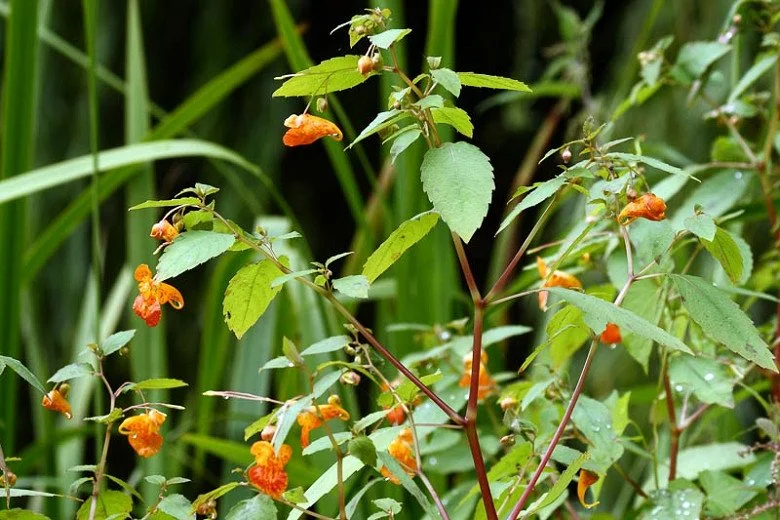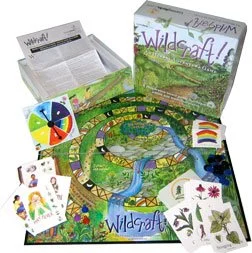You Might Have These 4 Secretly-Helpful Plants Growing in Your Yard RIGHT NOW
Summer Camps are awesome: I get to meet our campers at various parks around the city and explore, play silly games, and discover all sorts of plants and animals! A downside: I end up projecting my voice a lot while we are spread out in the woods, and I come home sounding like this guy from the movie Independence Day:
I’ve been seen by a ENT and given vocal exercises (that I remember to do sometimes!) but I also had a solution much closer to home… in fact, it grows right outside my backdoor! I’m talking about this beautiful herb, Heal-all:
Scientific name: Prunella vulgaris… which has to be the name of one of Harry Potter’s classmates
This beautiful and tough plant is in the mint family and can be used to make a throat-soothing tea. We bought a couple of these metal, reusable tea steepers and I’ve been plucking leaves and steeping them in hot water with honey, or even in my coffee! My voice-recovery has been shorter which I appreciate. As I’ve learned to recognize this plant’s leaves (which survive mowing and can survive for years as leaves with no flowers amongst the grass) I’ve realized it grows all over! I live on 6 acres and I’ve found this marvelous herb growing in the middle of my yard, out in the pastures, in my prairie, next to the house, and even in the middle of my woods! It is certainly not a fussy plant!
It transplants very easily, so I’ve been digging up clumps and planting them around a big oak tree, making it pretty AND practical! It’ll spread and make a lovely short purple ring around the tree. I’ve also dug-up two clumps to put in pots for easy access on my back porch.
This got me thinking: what plant treasures could be growing around your home that could help you out? There’s a certain magical feeling to solving a problem by picking a wild plant outside! Besides Heal-all, here are 3 other plants you may already have and could benefit from:
Disclaimer: the preceding/following information comes from my (Jared) personal experiences and should not be taken as medical advice. Consult accurate local field guides and medical professionals before using any wild plant to treat any symptom/disease. Use medicinal plants with caution and at your own risk.
Broadleaf Plantain (Plantago major)
Note the 5 vertical veins in the large leaves as well as the tall, skinny seed stalk
Where to find it: almost any untreated yard or compacted path/garden. It thrives on neglect and harsh conditions.
What it’s for: Bug bites/rashes
How Mr.Jared’s used it: My wife is especially attractive to mosquitoes. I’ve picked leaves, chewed them a bit to make them juicy, and applied directly to her bug bites. It provides instant relief of burning/itching when applied directly to the spot.
2. Orange Jewelweed (Impatiens capensis)
Note leaf color and shape, thick stems, and orange, trumpet-shaped flowers
Where to find it: found in moist woods, woods edges, and along waterways. May grow in your yard if you live near any of those habitats, not typically found in suburban developments.
What it’s for: Bug bites/burns/rashes (especially Poison Ivy!)
How Mr.Jared’s used it: I’m lucky enough to have plentiful areas around my woods full of this marvelous plant! Bumblebees and hummingbirds love it and so do I! The crunchy stems and soft leaves have an aloe-like sap all throughout that immediately soothes bites/burns/and Poison Ivy rash! Some people take the time to make balms and salves from it, but I’ve found in a pinch you can simply pick some leaves/stems and rub them into the problem spot until it’s slimy. Very soothing and all-around awesome plant… plus, the mini-greenbean-like seed pods explode on contact… super fun to pop with my daughters!
3. Common Yellow Woodsorrel (Oxalis stricta)
Note the bright-green heart-shaped leaves, the five-petaled yellow flowers and the short stature
Where to find it: found in many gardens, flowerbeds, and around most yards and woods edges.
What it’s for: a delicious, lemonade-flavored snack!
How Mr.Jared’s used it: This delicious plant is super-common and a great plant to look for! Bonus: it is the only clover-like plant with heart leaves and yellow flowers, meaning it doesn’t have poison lookalikes. Yay! Be sure to rinse before eating, and avoid picking from areas you know could be sprayed with insecticides/herbicides. (Note: as suggested by the scientific name, this plant contains oxalic acid, giving it its lemony taste. Over consumption of oxalic acid can lead to issues, but you’d have to eat heaps and heaps of the stuff to notice. So… don’t eat it by the bucket!)
Two excellent resources on herbs and foraging:
If you want to learn more about using plants, these are two AMAZING resources that make it fun and memorable:
The Wildcraft! Board Game
This game takes your family through a story-driven adventure, gathering plant cards along the way to solve various problems such as stings, mosquito bites, sore muscles, fevers and more. It’s a lot of fun and endlessly replayable! I’ve played it countless times with my daughters and my students and they all love it! Checkout the website for more!
Black Forager’s Instagram
Alexis Nikole Nelson, a local Columbus-native, is wildly popular on Instagram… she’s been featured on late night talkshows, PBS specials, a plethora of articles and more. Her fast-paced and hilarious reels feature various easy-to-find wild plants (usually around Columbus) that you can use medicinally or that are just plain yummy. I HIGHLY recommend checking out her stuff on Instagram… like right now!
One Final Note:
My yard naturally grows these plants (and many, many more) because we do not treat it with any chemicals. I can forage from my own yard because I know there won’t be any chemicals on it. Many critters also enjoy our yard for the same reason… in fact there are cute little Chipping Sparrow families out back as I type this, eating seeds and chipping away!









